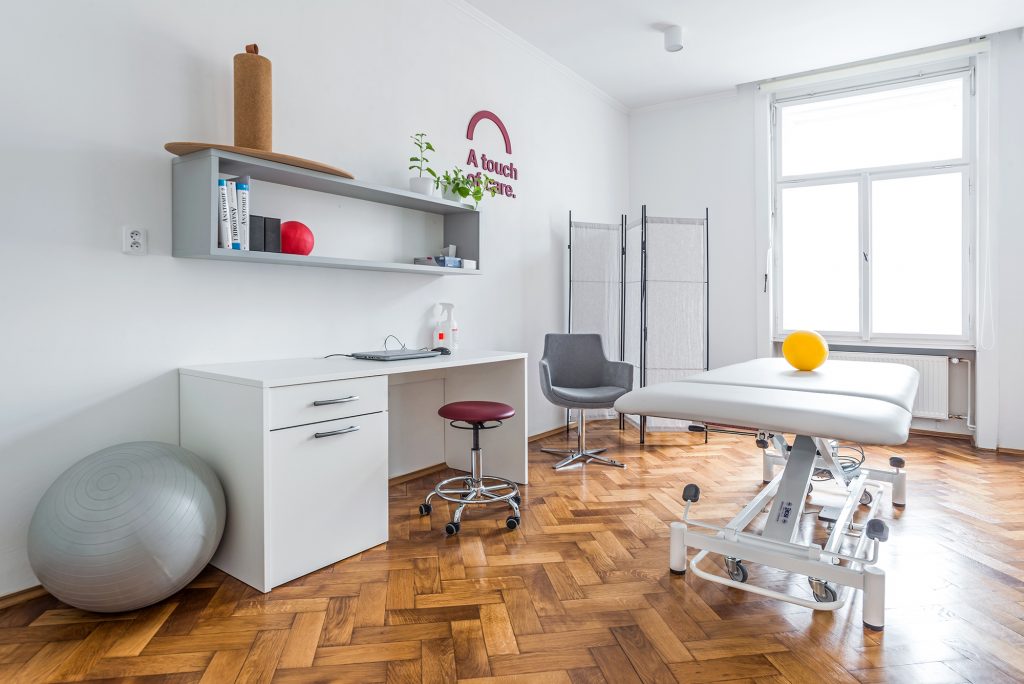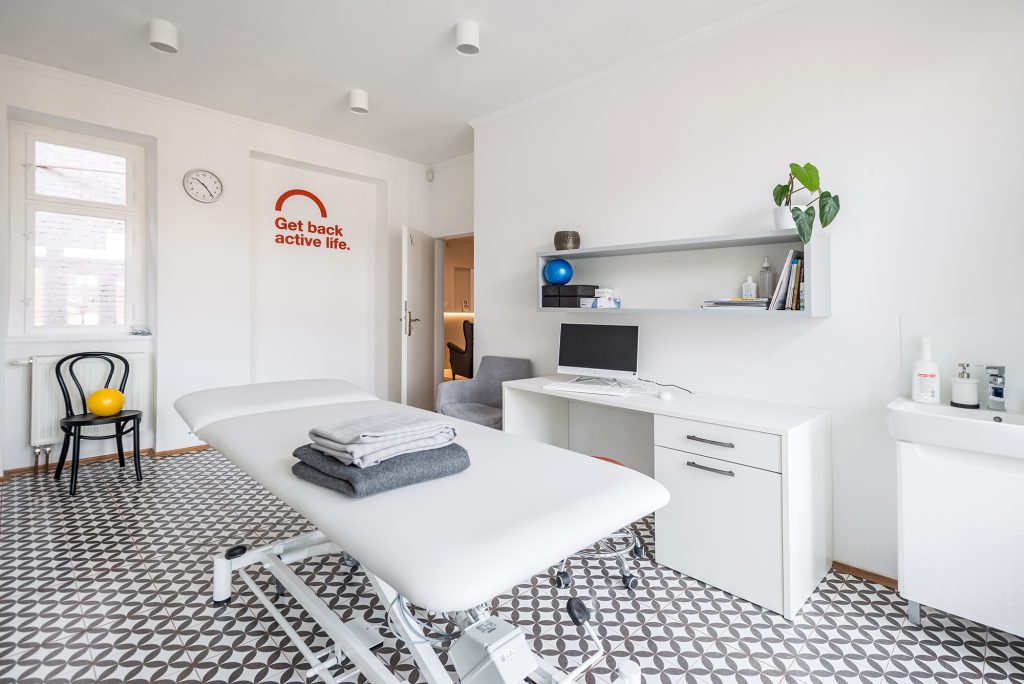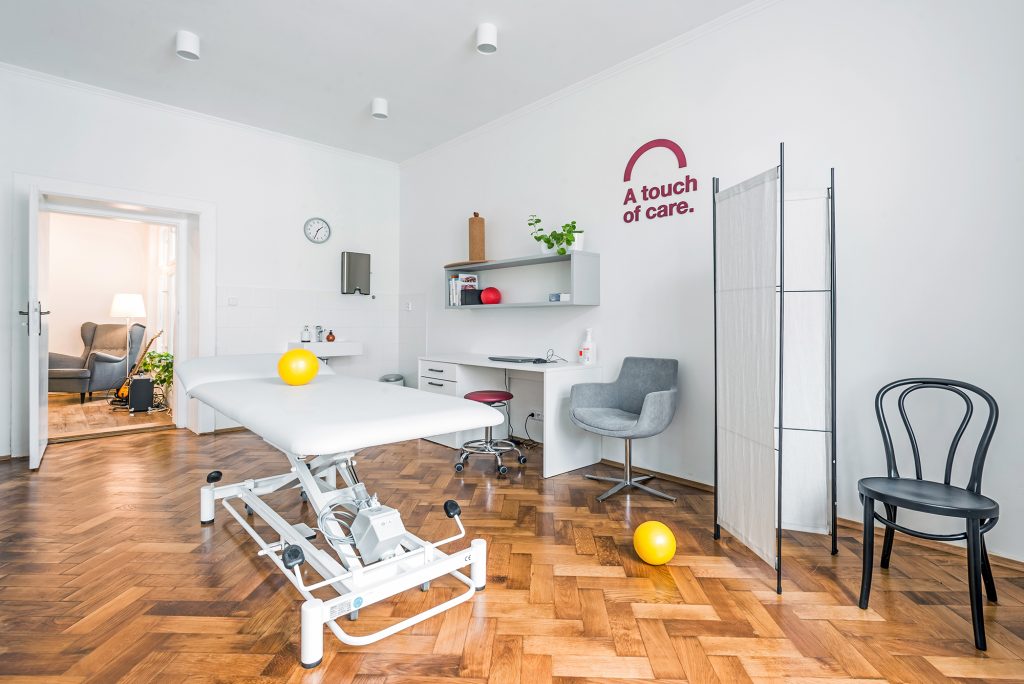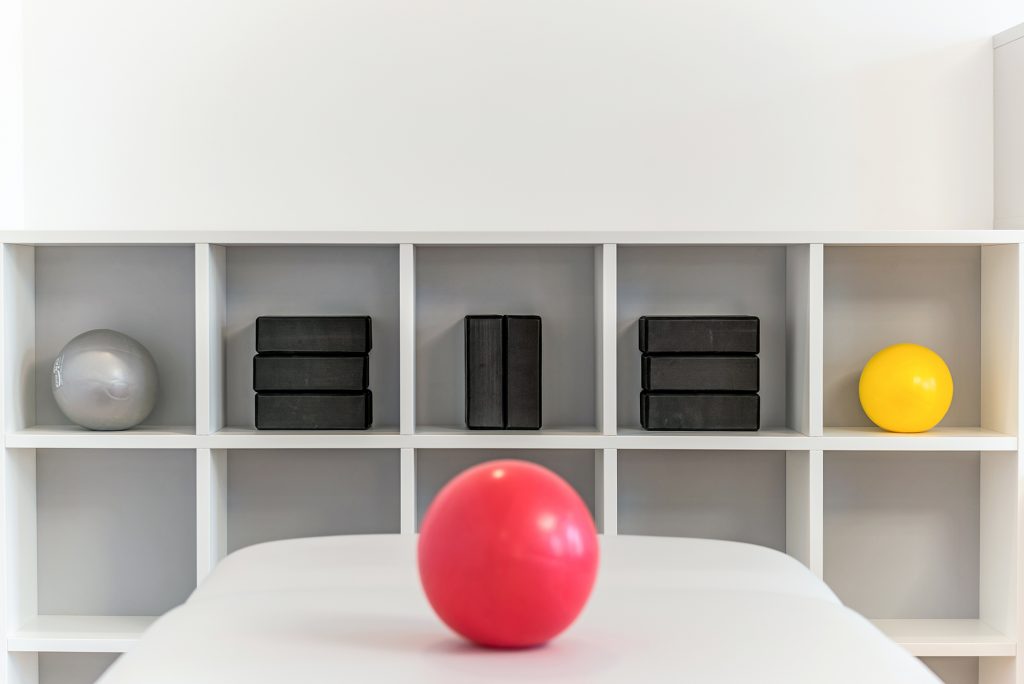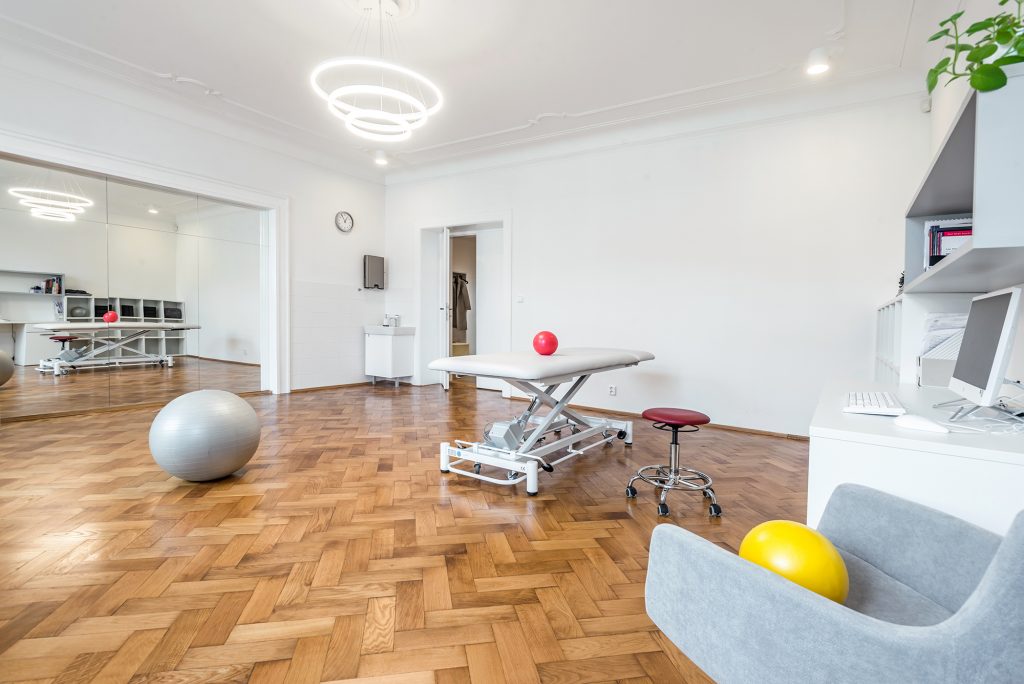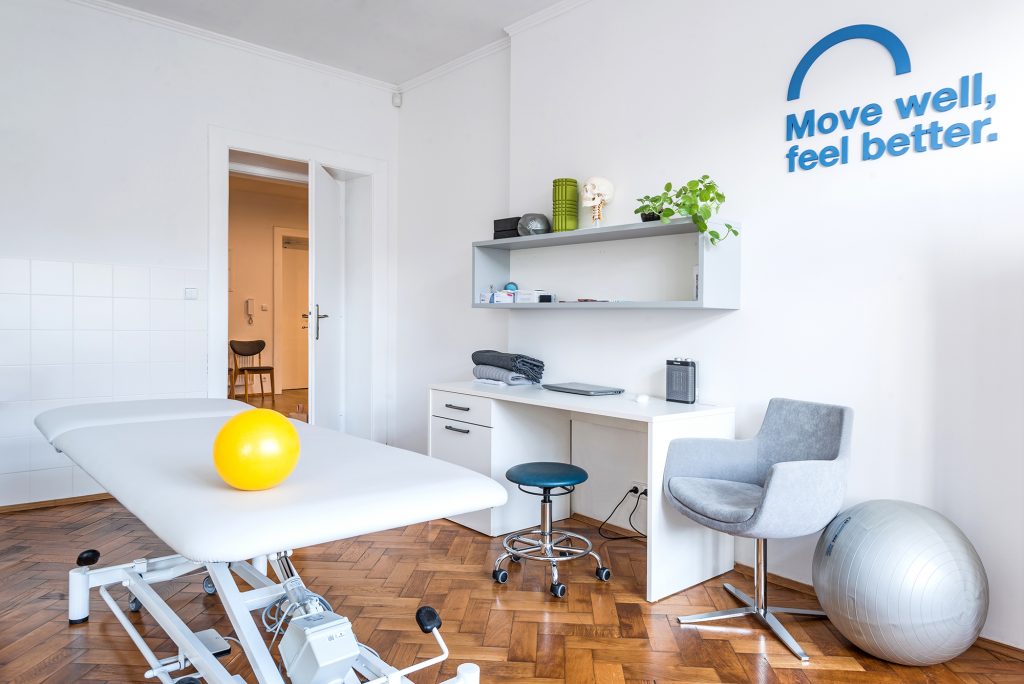Instructions on How to Walk Properly with Crutches
1. Correct Crutch Height
First and foremost, it’s essential to have the correct crutch height. The general rule of thumb is that when standing upright with your arm hanging naturally, the handle of the crutch should be at wrist level. Always adjust the height while wearing the shoes you spend the most time in.
2. Walking with Crutches Should Resemble Walking Without Them
I recommend starting your walk by placing both crutches ahead of you at an equal distance. Then place the injured leg between them without applying any weight on it. Even though you’re not allowed to put full weight on the injured leg, you should try to simulate as normal a walking pattern as possible (bend and straighten the knee, and don’t forget to extend the leg backward in the hip during the push-off phase). Step with your heel first, and roll your foot forward from heel to toe, but without weight-bearing. As your doctor permits, you can gradually apply partial weight on the injured leg during the step.
3. Maintain Good Posture
When pushing down with your arms on the crutches, always keep your back straight, head aligned with the spine (not thrust forward), engage your core muscles, slightly bend (open) your elbows, and keep your shoulders pulled down and back to engage the muscles between the shoulder blades and the lower stabilizers of the scapula. This way, you can avoid overloading the trapezius muscle, shortening the chest muscles, and straining the shoulder joints, which could lead to inflammation. Poor posture while walking with crutches can also cause headaches, rib and spine blockages, or other musculoskeletal issues.
4. Consistent Step Length and Rhythm
Always aim to take steps of equal length and maintain a consistent walking rhythm. You should look and feel natural while moving. You can check your gait by observing your shadow or ask someone to record a short video of you walking to see what improvements can be made.
5. Muscle Fatigue Is Natural
When walking for longer periods, remember to take breaks to prevent muscle fatigue and maintain the best possible posture. Keep your body active but avoid using excessive force. Relax, so your movement isn’t stiff. If your hands hurt from gripping the crutches, consider using gloves (such as cycling or fitness gloves) during long walks. They help distribute weight and reduce the risk of blisters or calluses.
6. Going Up Stairs
When going up stairs, first push down on the crutches and step up with the healthy leg onto the first step. Then bring the injured leg up (without weight-bearing), followed by the crutches.
7. Going Down Stairs
When going down stairs, start by standing on the healthy leg and place the crutches on the step below. Then bring the injured leg down (without weight-bearing), press down on the crutches, and step down with the healthy leg.
